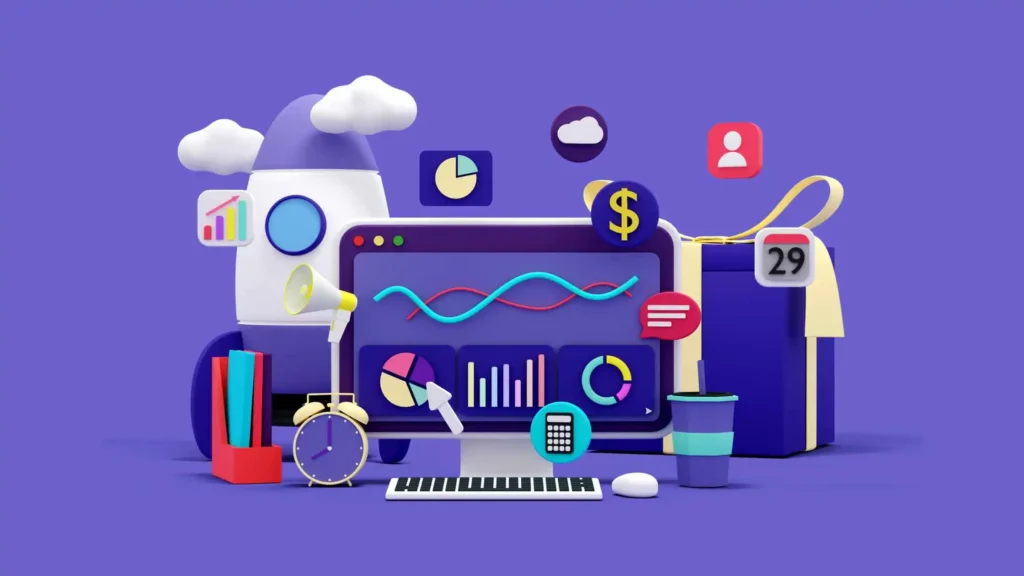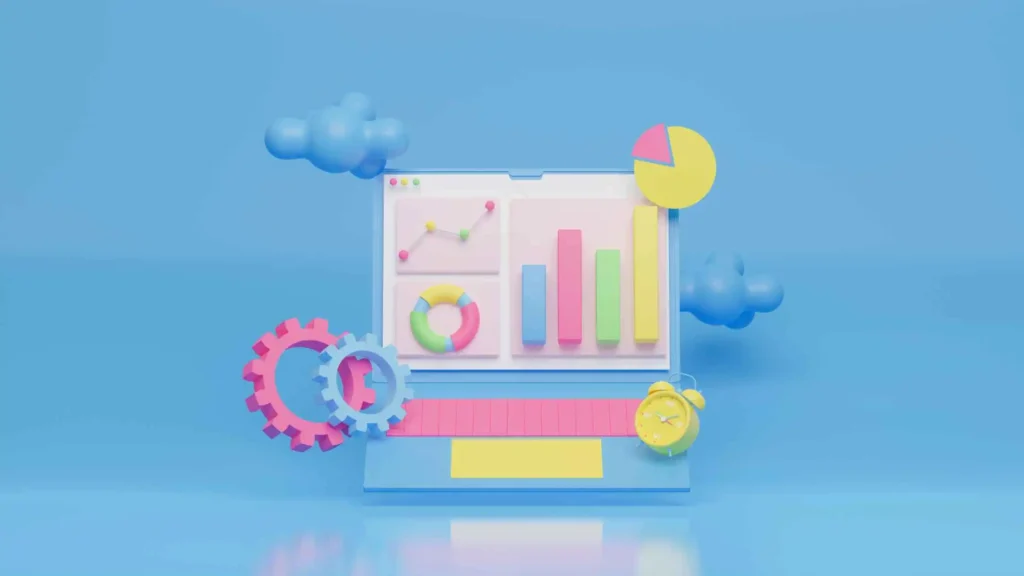Do you want to know how to create custom visualizations in Microsoft Power BI? Or Are you looking to enhance your data analysis and reporting capabilities?
Microsoft Power BI is a powerful business intelligence tool transforms raw data into meaningful insights.
While Power BI offers a wide range of pre-built visualizations, sometimes you may need to create custom visualizations to convey your data more compellingly and informatively.
In this article, we will explore the process of creating custom visualizations in Microsoft Power BI and unlock the full potential of your data.
So let’s go ahead!

Introduction to Custom Visualizations
Custom visualizations in Power BI enable you to go beyond the default options and design unique visual representations of your data.
Whether you want to create a custom chart, a specialized gauge, or an interactive map, the possibilities are endless.
By leveraging custom visualizations, you can tailor your reports and dashboards to effectively meet your business needs and engage your audience.
Getting Started with Custom Visualizations
To create custom visualizations in Power BI, you need to follow a few simple steps:
Step 1: Install the Power BI Custom Visuals
The first step is to install the Power BI Custom Visuals marketplace, which hosts a vast library of third-party visualizations created by the Power BI community.
To install custom visuals, navigate to the “Home” tab in Power BI Desktop, click on “Get more visuals” in the “Visualizations” pane, and then select “Import from the marketplace.”
This will open the Power BI marketplace, where you can explore and download various custom visualizations.
Step 2: Import the Custom Visualizations
Once you’ve found a custom visualization that suits your needs, click the “Add” button to import it into Power BI.
The custom visual will be added to your visualization pane, and you can start using it to create stunning visuals in your reports and dashboards.
Step 3: Use the Custom Visualizations
To use a custom visualization, simply drag and drop it onto your report canvas.
You can then customize its properties, such as data fields, appearance, and interactivity, using the “Visualizations” pane.
Power BI provides a user-friendly interface allowing you to configure your custom visualizations without coding knowledge.

Exploring Different Types of Custom Visualizations
Power BI offers various custom visualizations that cater to multiple data analysis requirements.
Let’s dive into some popular custom visualizations and how to create them.
1. Custom Charts
Custom charts enable you to visually represent your data beyond the standard bar, line, or pie charts. Custom charts allow you to visualize your data innovatively, such as bubble charts, treemaps, or box plots.
To create a custom chart, follow these steps:
- Import a custom chart visualization from the Power BI marketplace.
- Drag and drop the custom chart onto your report canvas.
- Assign the appropriate data fields to the chart’s properties in the “Visualizations” pane.
- Customize the chart’s appearance, labels, and other settings to match your requirements.
2. Specialized Gauges
Gauges are effective visualizations for displaying single values or metrics.
Power BI allows you to create specialized gauges that can convey critical information at a glance.
Whether you need to visualize KPIs, progress indicators, or performance metrics, specialized gauges can help you present your data visually appealingly.
To create a specialized gauge, follow these steps:
- Install a custom gauge visualization from the Power BI marketplace.
- Add the custom gauge to your report canvas.
- Map the relevant data fields to the gauge’s properties.
- Customize the gauge’s appearance, scales, thresholds, and other settings to suit your needs.
3. Interactive Maps
Maps are potent visualizations for geospatial data analysis. Power BI offers custom map visualizations that enable you to create interactive and visually engaging maps.
Custom maps can provide valuable insights if you want to display sales by region, analyze customer distribution, or track geographical data.
To create an interactive map, follow these steps:
- Download a custom map visualization from the Power BI marketplace.
- Drag and drop the custom map onto your report canvas.
- Configure the map’s data fields to represent the desired geographic information.
- Customize the map’s layers, colors, tooltips, and interactions for optimal data exploration.
Best Practices for Creating Custom Visualizations
Creating custom visualizations is not just about selecting the right visuals; it’s also about designing them effectively to communicate your data story.
Here are some best practices to consider:
1. Understand Your Data
Before creating custom visualizations, ensure that you have a deep understanding of your data.
Identify the key insights you want to convey and choose visualizations that best represent those insights.
Consider your data type (categorical, numerical, time-based) and the relationships between different data points.
Can I share reports containing custom visualizations with others who don’t have Power BI installed?
Yes, you can share your Power BI reports with others who don’t have Power BI installed.
You can embed your reports in websites, blogs, or other online platforms using Power BI’s Publish to Web feature.
This allows anyone with internet access to view your reports and interact with the custom visualizations.
2. Keep it Simple and Intuitive
Simplicity and intuitiveness are critical factors in creating compelling visualizations.
Avoid cluttering your visuals with extreme elements or complex interactions.
Use clear labels, colors, and tooltips to guide your audience’s understanding. Remember, the goal is to present data in a way that can be easily interpreted and comprehended.
Are there any limitations or considerations when using custom visualizations in Power BI?
While custom visualizations expand the capabilities of Power BI, there are a few limitations and considerations to keep in mind.
Some custom visuals may require additional data preparation or transformation steps.
It’s also essential to ensure that custom visuals are regularly updated from trusted sources to maintain compatibility with Power BI updates.
3. Leverage Interactivity
Power BI provides interactive features that enhance the user experience and allow deeper data exploration.
Take advantage of drill-through functionality, slicers, and filters to enable users to interact with your visualizations and uncover valuable insights.
Interactivity adds a layer of engagement and empowers users to dive into the details.
Can I create custom visualizations using my own code or programming languages?
Yes, Power BI provides an option called “Developer Visual” that allows you to create custom visualizations using your own code or programming languages, such as TypeScript, R, or Python.
This option gives you more flexibility and control over the visualization creation process.
4. Experiment with Formatting and Styling
Visual appeal plays a significant role in capturing your audience’s attention.
Experiment with different formatting options like font styles, colors, backgrounds, and chart layouts.
Align your visualizations with your organization’s branding guidelines to maintain consistency and professionalism across your reports and dashboards.
Can I import custom visualizations created by others into my Power BI reports?
Absolutely! Power BI’s Custom Visuals marketplace hosts a vast collection of custom visualizations created by the Power BI community.
You can download and import these visuals into your reports, saving you time and effort in creating visualizations from scratch.
5. Test and Iterate
Creating compelling custom visualizations often requires an iterative process.
Feel free to experiment with different visualizations, layouts, and configurations.
Test your visualizations with a sample audience and gather feedback to refine and improve your designs.
Continuous iteration ensures that your visualizations evolve to meet the changing needs of your business.
Can I export my custom visualizations for other Power BI reports or environments?
Power BI allows you to export your custom visualizations as .pbiviz files.
These files contain the custom visuals along with their configurations and dependencies.
You can then import the .pbiviz files into other Power BI reports or share them with colleagues who can import them into their environments.
Conclusion
Creating custom visualizations in Microsoft Power BI allows you to elevate your data analysis and reporting.
Following the steps outlined in this article and adhering to best practices, you can design compelling visual representations of your data that resonate with your audience.
Whether you need custom charts, specialized gauges, or interactive maps, Power BI’s extensive marketplace and intuitive interface make the process accessible to all skill levels.
Unlock the full potential of your data and transform it into actionable insights with custom visualizations in Microsoft Power BI.












Pingback: The Difference between Power BI Desktop and Power BI Service